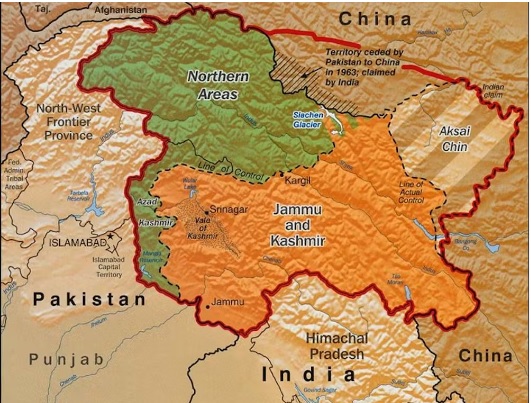A Legacy of Division & Dispute
The partition of British India in 1947 was one of the most defining and turbulent events in South Asian history, leading to the creation of India and Pakistan. While the partition itself was marked by violence, displacement, and communal strife, one of its most enduring consequences has been the territorial dispute over Kashmir.
The conflict over Kashmir has resulted in wars, insurgencies, diplomatic tensions, and military confrontations between India and Pakistan, making it one of the most volatile geopolitical flashpoints in the world. But how did the partition of India lead to this decades-long struggle?
The Partition of British India & Kashmir’s Dilemma
The Creation of India & Pakistan
- British India was divided into two nations—India (predominantly Hindu) and Pakistan (Muslim-majority).
- Princely states were given the choice to join India, Pakistan, or remain independent.
- Kashmir, ruled by Maharaja Hari Singh, was a princely state with a Muslim-majority population but a Hindu ruler.
Kashmir’s Accession to India
- Pakistan-backed tribal forces invaded Kashmir in October 1947, aiming to force its accession to Pakistan.
- Maharaja Hari Singh sought military assistance from India, leading to Kashmir’s formal accession to India.
- India sent troops to defend Kashmir, triggering the First Indo-Pak War (1947-1948).
- A UN-mediated ceasefire in 1949 established the Line of Control (LoC), dividing Kashmir between India and Pakistan.
The decision of Kashmir’s ruler to join India remains the root cause of the territorial dispute, with Pakistan rejecting the accession and India defending it.
Wars & Military Clashes Over Kashmir
First Indo-Pak War (1947-1948)
- Pakistan launched an invasion, leading to India’s military intervention.
- The war ended with a ceasefire brokered by the United Nations, dividing Kashmir along the LoC.
- Pakistan retained control over Azad Kashmir & Gilgit-Baltistan, while India controlled Jammu & Kashmir.
Second Indo-Pak War (1965)
- Pakistan attempted to infiltrate Kashmir, leading to another war.
- The conflict ended with the Tashkent Agreement, but tensions remained high.
Third Indo-Pak War (1971) & Bangladesh’s Independence
✔ India’s intervention in East Pakistan (now Bangladesh) led to Pakistan’s defeat. ✔ The Simla Agreement (1972) formally established the LoC, but Kashmir remained disputed.
Kargil War (1999)
- Pakistani forces & militants infiltrated Indian positions in Kargil, leading to a high-altitude war.
- India successfully repelled the attack, but tensions escalated further.
The wars over Kashmir have deepened mistrust between India and Pakistan, making diplomatic resolutions increasingly difficult.
Modern-Day Conflict: Terrorism, Insurgency & Political Tensions
Rise of Militancy in Kashmir (1989-Present)
- Kashmiri insurgents, backed by Pakistan, launched an armed rebellion against Indian rule.
- India responded with counter-insurgency operations, leading to years of violence.
- Cross-border terrorism remains a major issue, with India accusing Pakistan of supporting militant groups.
Recent Escalations & Drone Warfare
- India launched Operation Sindoor in 2025, targeting terror camps in Pakistan & PoK.
- Pakistan retaliated with drone & missile strikes, escalating tensions.
- Both nations continue military buildup along the LoC, raising fears of further conflict.
The Kashmir conflict has evolved, incorporating modern warfare tactics, diplomatic standoffs, and global interventions.
Geopolitical & Humanitarian Consequences
Impact on Civilians
- Thousands displaced due to military clashes & insurgency.
- Economic instability in Kashmir, affecting trade & tourism.
- Human rights concerns, with reports of civilian casualties & security crackdowns.
Global Diplomatic Efforts
- UN, US, China & Russia have attempted mediation, but no permanent resolution has been reached.
- India & Pakistan continue diplomatic engagements, but mistrust remains high.
The human cost of the Kashmir conflict is immense, affecting millions of lives.
Bottom-Line: A Conflict Without Resolution?
The partition of India in 1947 set the stage for one of the longest-running territorial disputes in modern history. Despite wars, peace agreements, and diplomatic efforts, Kashmir remains a deeply contested region, with no clear resolution in sight.
As military tensions rise, diplomatic efforts falter, and civilians endure the consequences, the world watches anxiously—will peace ever prevail, or will Kashmir remain a battleground for generations to come?


